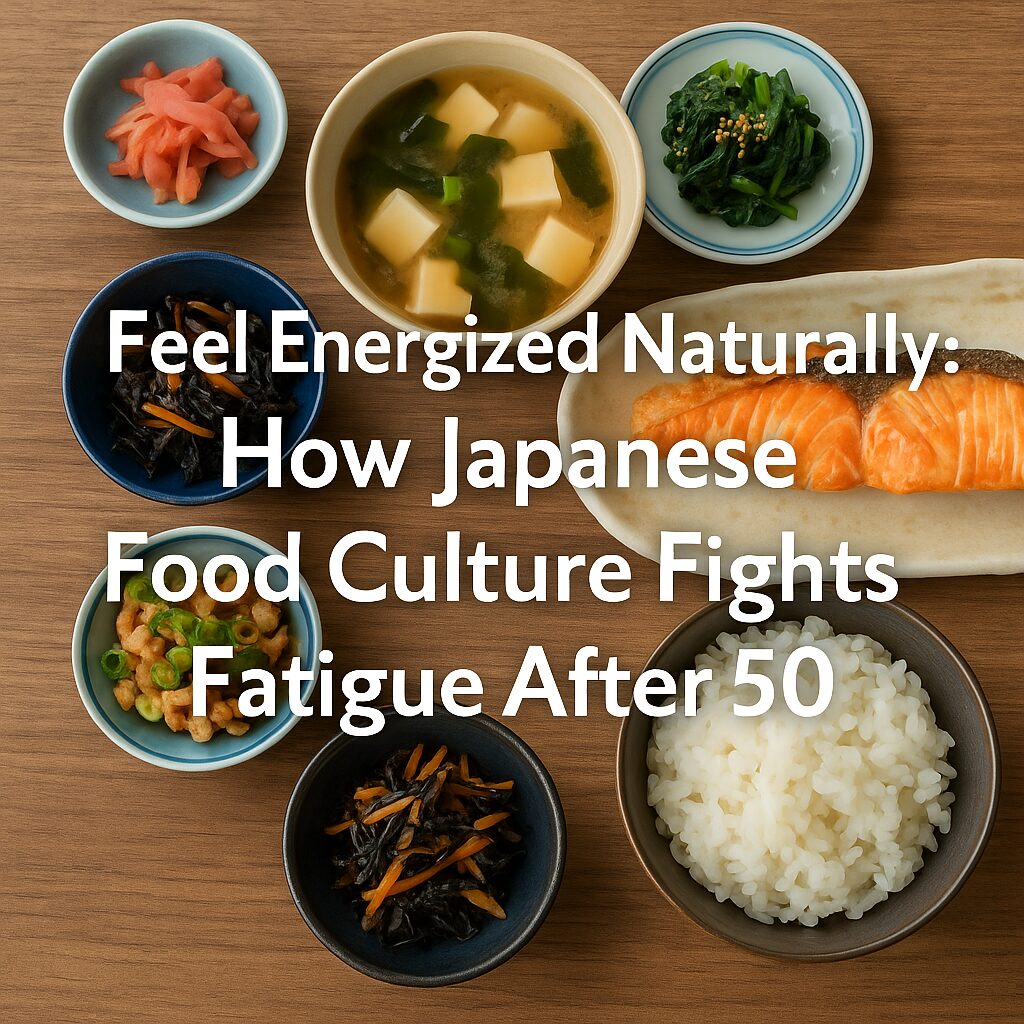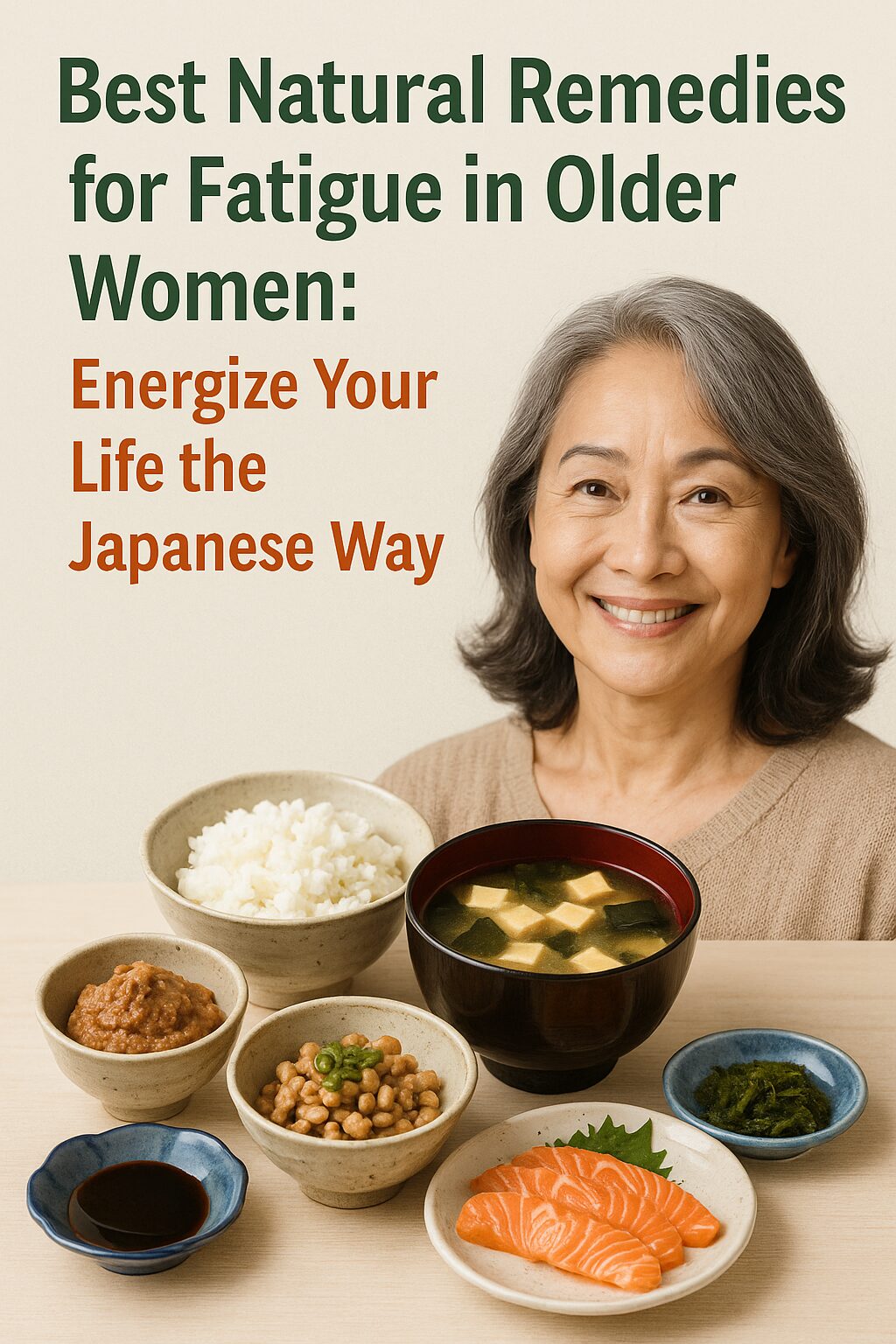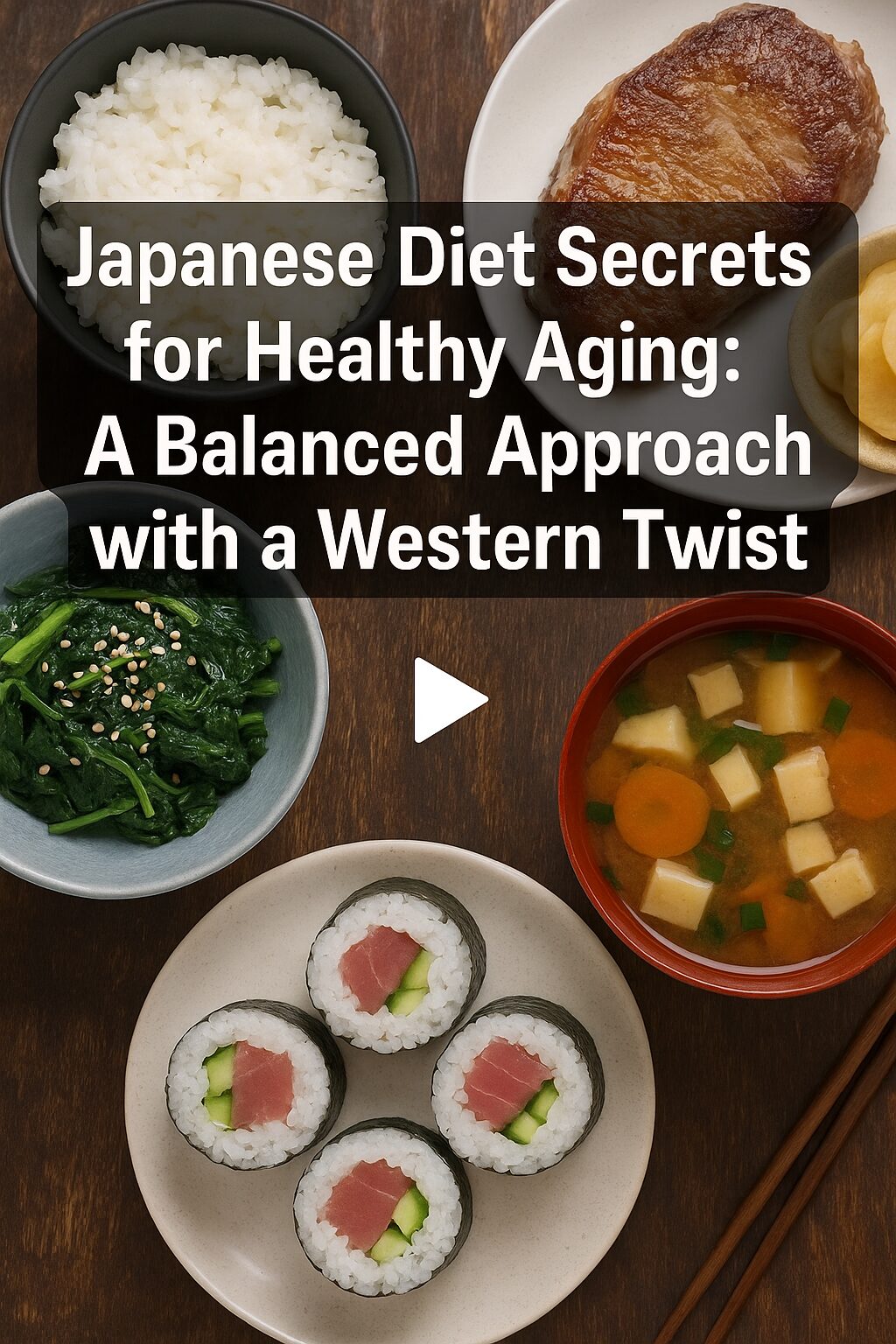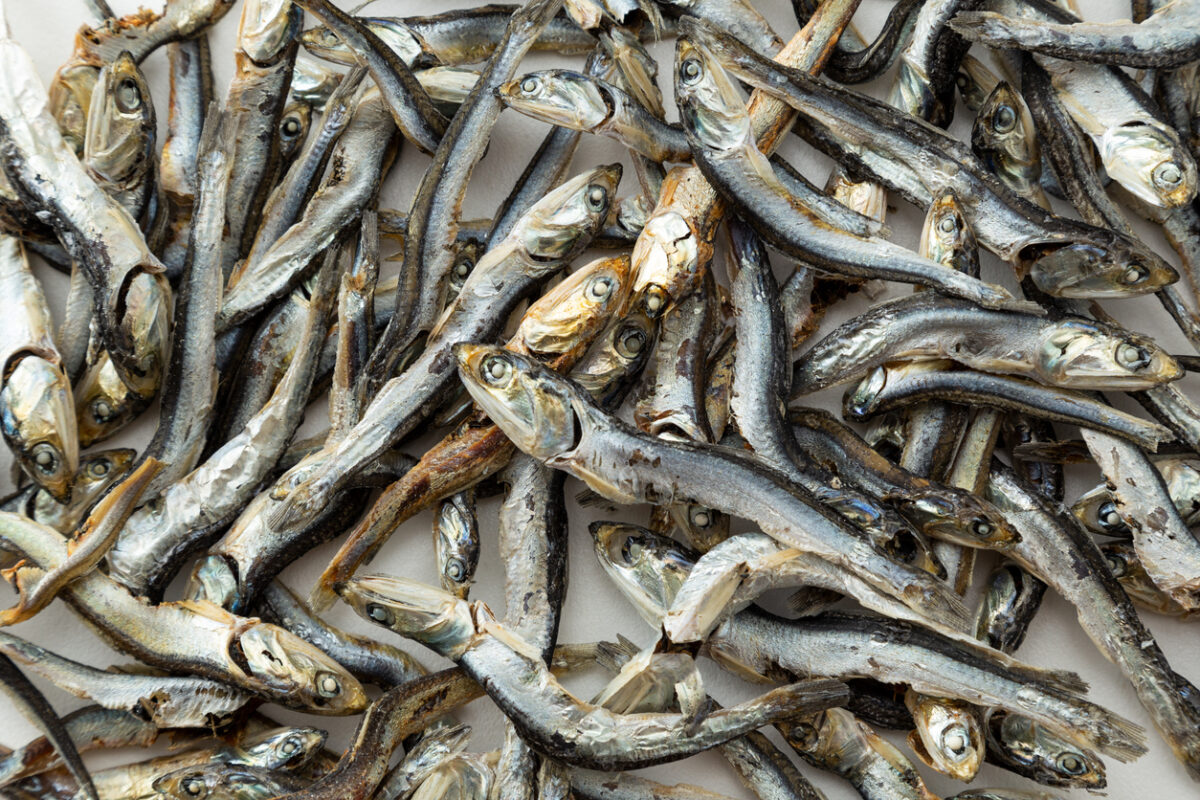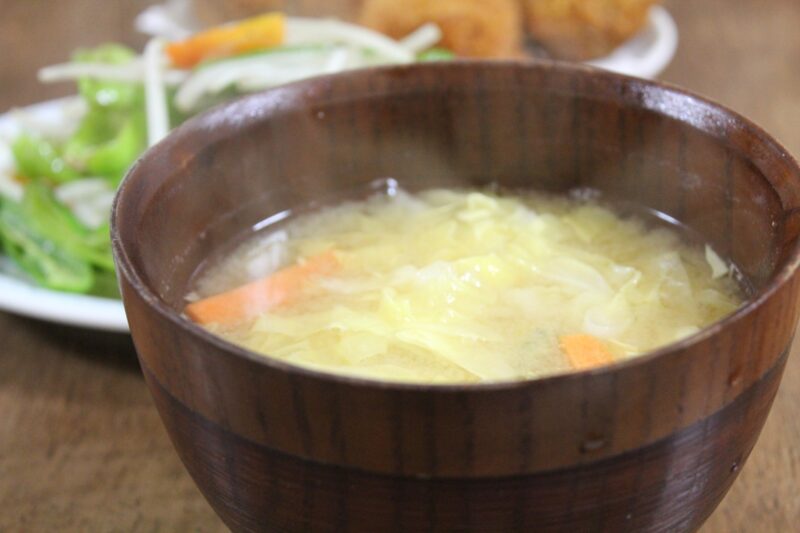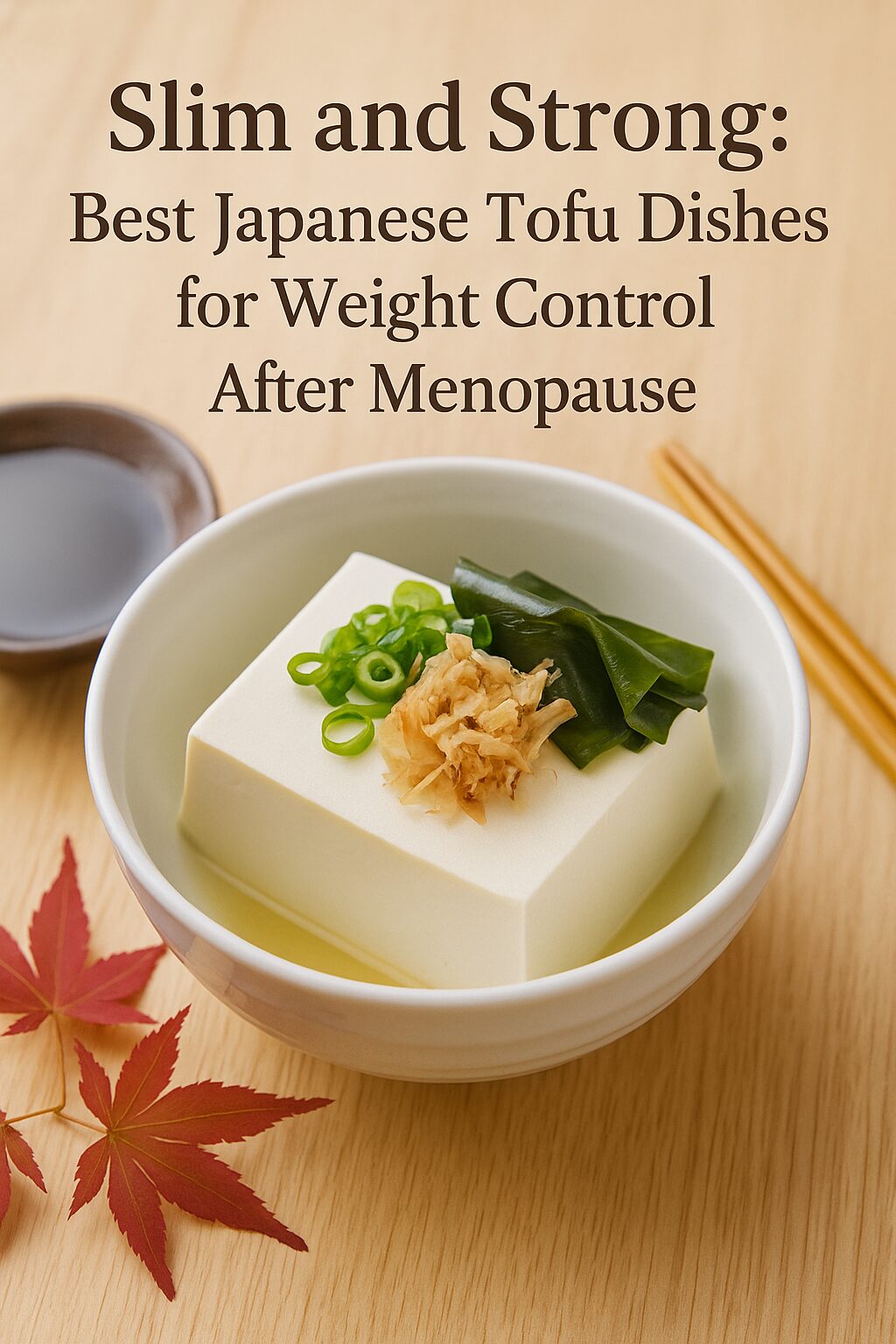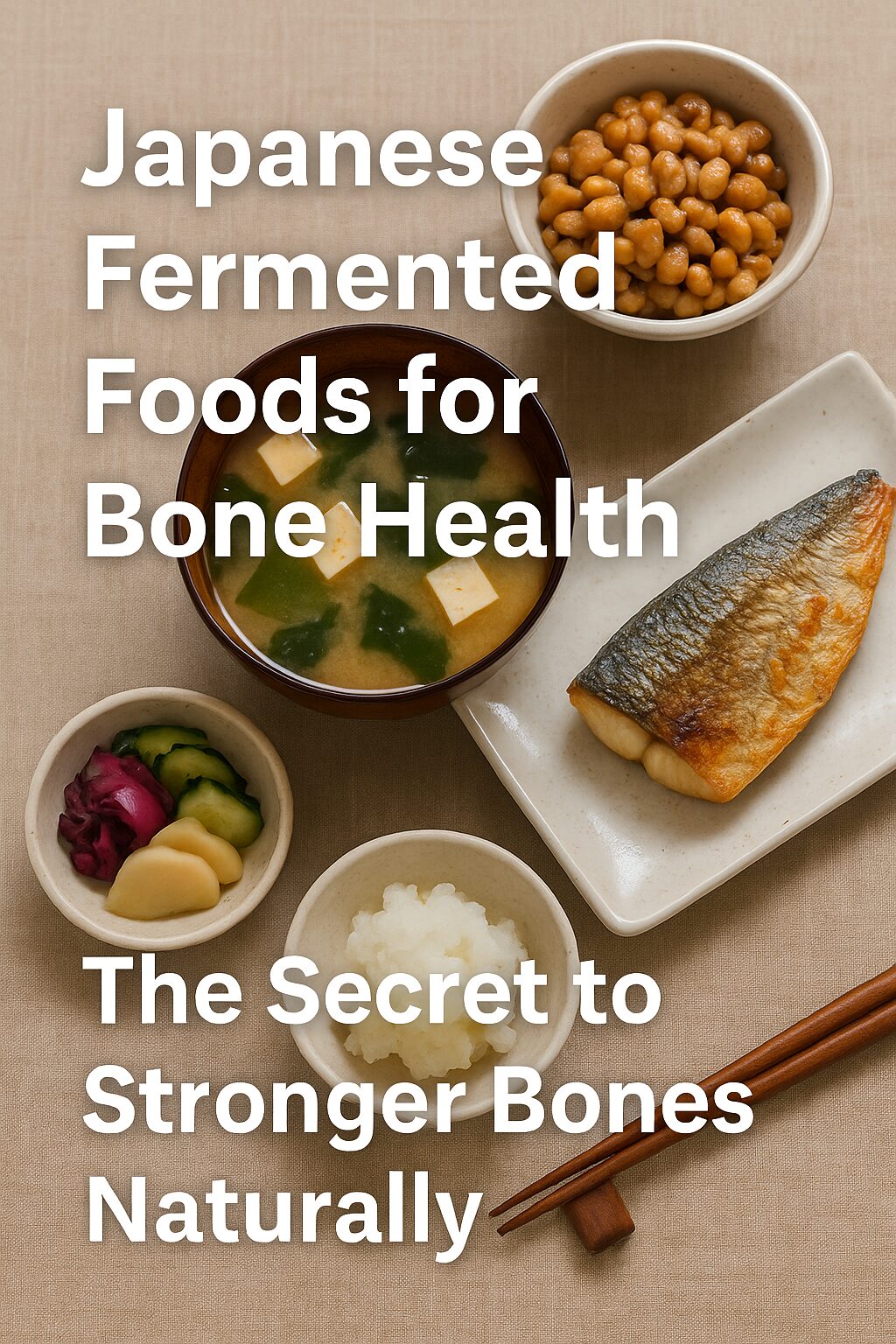Fatigue affects millions of women over 50. Hormonal changes, slower metabolism, and lifestyle stress all contribute. While many turn to caffeine or over-the-counter energy boosters, a gentler, long-lasting solution may lie in traditional Japanese dietary wisdom. The Japanese way of eating promotes balance, nourishment, and natural energy. In this article, we explore how Japanese food culture can help you feel less tired, more focused, and better equipped to enjoy life after 50.
The Hidden Link Between Food and Fatigue in Older Women
Why Energy Drops After 50
As estrogen and DHEA levels fall, women often experience fatigue, brain fog, and lower resilience. These changes impact the body’s ability to produce energy efficiently. Diet plays a key role in either supporting or draining energy levels.
Typical Western Pitfalls
Highly processed foods, sugar, and excessive caffeine spike and crash energy levels. Nutrient gaps—particularly in B vitamins, magnesium, and iron—only worsen fatigue. Many popular diets lack key nutrients that help older women stay energized.
Key Japanese Ingredients That Naturally Restore Energy
Fermented Soy: A Plant-Based Powerhouse
Miso and natto, staples in Japanese cuisine, are packed with fermented soy isoflavones. These phytonutrients help balance hormones, especially estrogen, without synthetic replacements. Natto also offers vitamin K2 and probiotics that support bone health and digestion.
Seaweed and Fish: Gentle Mineral and Protein Sources
Seaweed provides iodine, magnesium, and other trace minerals essential for thyroid function and energy metabolism. Fish like mackerel and salmon offer high-quality protein and omega-3 fatty acids, which support brain health and reduce inflammation—a hidden cause of fatigue.
Matcha and Green Tea: Clean Focus Without the Crash
Unlike coffee, green tea offers L-theanine, which promotes calm alertness. Matcha, a powdered green tea, contains both caffeine and antioxidants, providing a balanced energy lift without jitters.
Fermentation and Hormone Balance: The Secret Weapon
Isoflavones That Work With Your Body
Most Western soy products contain glycoside-type isoflavones, which are hard to absorb. Traditional Japanese fermentation converts these into aglycone isoflavones, which your body can use more effectively. These help reduce hot flashes, stabilize mood, and support natural DHEA production—critical for energy and stress resilience.
Effisoy®: A Smarter Isoflavone Supplement
If you’re not eating natto or miso daily, consider Juveriente’s Effisoy®, which uses fermented soy to deliver highly absorbable aglycone isoflavones. Unlike synthetic hormone treatments, Effisoy® works with your body to restore hormonal balance naturally and gently.
Traditional Eating Habits That Keep Energy Steady All Day
Hara Hachi Bu: Eating Until You’re 80% Full
This cultural practice encourages mindful eating and portion control. It prevents overeating, reduces digestive burden, and keeps blood sugar stable—essential for avoiding post-meal energy crashes.
Balanced Meals With Multiple Small Dishes
The typical Japanese meal includes a variety of small portions: rice, miso soup, pickles, a protein source, and vegetables. This balance ensures slow digestion, sustained energy, and full nutrient coverage.
Consistency and Routine
Regular mealtimes and light daily movement help maintain steady blood sugar and reduce stress on the adrenal system. These habits reduce the highs and lows that lead to mid-day fatigue.
Filling the Gaps: When to Consider Natural Supplements
Beta-Cryptoxanthin and Bone Energy
Few people know that mandarin oranges—especially the type used in Japan—contain beta-cryptoxanthin, a carotenoid linked to improved bone health and reduced inflammation. A large Japanese cohort study confirmed its connection to higher bone density and lower fracture risk.
Juveriente’s Bone Strength Complex delivers a concentrated extract of this compound. By supporting strong bones and lowering inflammatory markers, it indirectly boosts physical energy and resilience in older women.
A Natural Complement to Your Diet
While a Japanese-style diet goes far, it may still lack certain elements due to modern lifestyles. Effisoy® and Bone Strength Complex bridge those gaps, enhancing your diet’s benefits without disrupting its natural foundation.
Final Thoughts
Feeling tired isn’t just part of aging—it’s often a signal that your body needs better support. The Japanese approach to food and lifestyle offers a sustainable, enjoyable way to restore energy. Focus on fermented soy, nutrient-dense vegetables, seaweed, fish, and gentle supplements like Effisoy® and Bone Strength Complex.
Small shifts in diet and mindset can create big changes in how you feel every day. Try a Japanese-inspired approach and rediscover your natural energy—without stimulants, crashes, or complicated routines.
Juveriente Effisoy: A Natural Solution for Hormonal Balance and Energy Restoration
Juveriente®’s Effisoy® offers a natural solution to combat age-related fatigue by supporting hormonal balance. Launched in 2016, Effisoy® is based on fermented soybean germ extract, a traditional Japanese ingredient known for its potential to ease menopause symptoms and improve overall vitality.
Effisoy® works by boosting the body’s natural synthesis of DHEA, a hormone precursor crucial for maintaining balanced hormone levels. As we age, the body’s ability to produce DHEA declines, contributing to symptoms of fatigue and decreased energy. Effisoy® helps restore this balance by enhancing the body’s own hormone production processes. It supports hormonal balance safely, without introducing external hormones, allowing your body to regulate its hormone composition naturally.
This balance not only aids in reducing age-related fatigue but also promotes healthier skin and overall well-being. While Effisoy® benefits both men and women, it has become especially popular among women experiencing menopause, helping to alleviate symptoms like fatigue, mood swings, and skin aging.
By addressing the hormonal changes associated with aging, Juveriente®’s Effisoy® provides a natural and effective way to restore energy levels and combat age-related fatigue, helping you feel more vibrant and energized as you age.
Here are some of the real product reviews in our Amazon shop.
“Restful sleep finally!!”, “I Am Now Free of Hot Flashes!!”, “Lifesaver”



